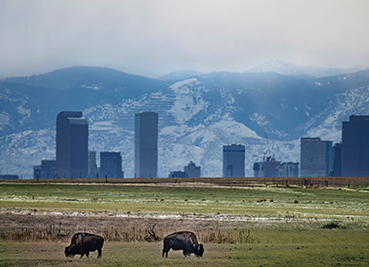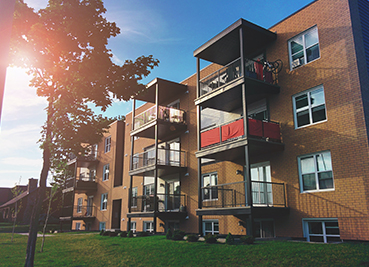The pandemic distorted both supply and demand, driving up costs for tenants
By ALDO SVALDI | asvaldi@denverpost.com | The Denver Post | September 7, 2021 at 6:00 a.m.
Apartment rents are rising rapidly across the northern Front Range, about triple the rate seen before the pandemic, with annual gains topping 20% in places like Parker and Colorado Springs.
While the pandemic provided some relief to renters last year, especially in denser urban markets like Denver, the discounts quickly evaporated, replaced by rent increases that are now higher than they would have been absent the outbreak.
“The places we have been seeing the fastest rent growth are the suburbs and the smaller cities surrounding Denver. Colorado Springs rents are up 22% since the start of the pandemic. That is one of the biggest increases we have seen anywhere,” said Chris Salviati, a senior housing economist with Apartment List, a leading apartment search engine.
For metro Denver as a whole, rents are up 14.4% year-over-year in August and they are up 12.8% since the pandemic arrived in March 2020, according to the Apartment List September Rent Report, which tracks the changes in the rents charged for the same apartments over time.
Midpoint or median rents were $1,429 for a one-bedroom apartment in metro Denver and $1,743 for a two-bedroom unit last month, per the report.
After Colorado Springs, Castle Rock had the biggest gain in apartment rents since the start of the pandemic at 21.6%, followed by Parker at 20.5%, Thornton at 19.9%, Lone Tree at 19.1%, Littleton at 17.7% and Broomfield at 16.6%.
To put those rent hikes into perspective, the average weekly wage for workers in metro Denver rose 4.3% annually in the first quarter of the year, according to the U.S. Bureau of Labor Statistics.
The suburbs saw higher demand last year because of the fear of infection that came with living in more crowded spaces and the need for more room to accommodate remote work. That trend continues. The rollout of vaccines and the reopening of entertainment venues, however, has increased the comfort level with moving back into downtown areas.
Denver, where median apartment rents were down about 7% at one point, swung back to even by May and is now sitting on a 12.2% annual gain as of August, Salviati said. Most of the gains have come in just the past three months.
Denver renters benefitted from a sluggish market prior to the pandemic, thanks partly to a heavy supply of new luxury apartments hitting the market. Between 2017 and the start of the pandemic, rents rose only 6.4% in Denver, but in the past 18 months they are up 8.3%, said Salviati, noting the pattern is playing out across the country.
Nationally, apartment rents are up 12.4% in the past year and 11.8% since March 2020, according to Apartment List. But some pockets lag, and in Colorado, Greeley had the smallest apartment rent gains at 6% since March 2020.
Dwellsy, a platform for rental properties, also is capturing dramatic rent increases in its survey, which looks at the rents landlords are asking for on the properties they list.
“Colorado rent is going up fast,” said Jonas Bordo, CEO of the San Francisco-based company. “The median one-bedroom apartment rent in Colorado went up by 3.4% from July to August. That’s an enormous change from one month to the next.”
Since the beginning of the year, one-bedroom apartment rents are up by 14.8% in Colorado, and between July and August, median rents shot up 4.2% in Denver for a one-bedroom apartment, another startling increase.
Rent inflation doesn’t appear to be running as hot in single-family rentals as it is with apartments. Single-family rents are rising about 5% annually in metro Denver as of July, said Tony Julianelle, CEO of Atlas Real Estate in Denver, who used estimates from John Burns Real Estate Consulting.
Atlas Real Estate manages a portfolio of 5,500 “doors” across five states for 1,000 investors. Julianelle said the rent adjustments Atlas is making are on average below 5%, in part because some investors prefer to avoid tenant turnover if they can.
“When we look at the people who are applying to rent properties, a very high number of them are coming from Los Angeles, New York City and San Francisco,” he said. For those transplants, a home can be rented along the Front Range for less than a small apartment.
Combining single-family and multi-family rentals that it tracks, Zillow estimates that metro Denver rents in July were up 10.2% year over year to $1,872. Had there been no pandemic, Zillow estimates the typical rent on its index would have been somewhere around $1,823. So the “pandemic premium” is currently at $49, and is likely to widen.
What’s behind the big and unpredicted jump?
A lot of things are driving the big spike in rents, which caught many experts off guard, but it basically comes down to supply, demand and the distortions that the pandemic created in both.
Between construction material shortages, labor shortages and stretched-out permit approval and inspection times, the pipeline of new apartments has gotten clogged up.
RENTCafé, using data from Yardi Matrix, predicts developers will only deliver 5,581 new apartment units this year across metro Denver, nearly half of 2020 deliveries and back to 2017 levels. While local sources dispute whether the decline will be that large, it is clear that builders are struggling to keep up with demand.
“The ability to complete units has been hampered during COVID-19 and even prior there was a lack of labor resulting in delivery times of 25 months on average compared to the 18 predicted,” said Ron Throupe, associate professor of real estate at the University of Denver.
But even with the new construction hurdles, the number of units hitting the market in any six-month or 12-month period is a small fraction of the total number of apartments out there, said Salviati. And it can’t explain why metro Denver’s apartment vacancy rate plunged from 5.5% in the first quarter to 3.7% in the second, according to an apartment survey that Throupe compiles each quarter.
That extra demand is coming from a lot of sources. The Federal Reserve’s decision to lower interest rates to protect the economy during the pandemic caused home prices to spike, so much so that some renters were priced out of owning and left renting. The pandemic also made employers more accepting of remote work arrangements and Colorado has proven a favored place to land, even if temporarily.
But the key reason seems to be that more households are forming, Salviati said. Young adults who moved back home with their parents are moving out again, and the college and high school graduates who never got to launch last year are launching. Stimulus payments and other federal benefits could also be allowing people who might have rented with roommates to go out on their own.
There’s another piece of the supply puzzle on the supply side that is harder to quantify. The moratorium on evictions may have locked more households in place, including those who in normal times might have moved in with friends or family or found another living arrangement, he said.
Tenants who were either fearful of moving during a pandemic or protected from eviction stayed put, further constricting supply. Throupe said his research shows turnover in apartments in metro Denver is down this year.
Brian Rossbert, executive director of Housing Colorado, said while his group doesn’t assist directly with rental assistance, it has seen more calls coming in from renters seeking help. Whether that increase is coming out of the elimination of the federal eviction moratorium or because renters are facing sticker shock on lease renewal isn’t entirely clear.
A new state law bars landlords from passing on rent hikes more than once a year, but it doesn’t prevent big rent hikes at renewal, something Rossbert said he is hearing more about anecdotally.
And renters unable to handle those increases financially don’t have access to federal rental assistance funds unless they can prove a financial hardship caused by the pandemic.
“Definitely our perspective at Housing Colorado is that we need more supply. There are a lot of contributing factors to that supply not being there. This isn’t a problem we are going to fix overnight with any kind of policy maneuvers. We will be in this for the long haul,” Rossbert said.




